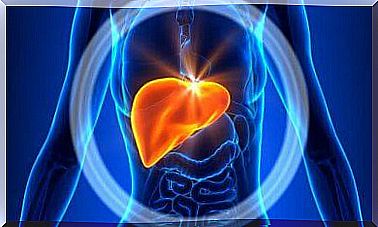What Does Quaternary Prevention Mean?

Quaternary prevention is the subject of much discussion in the medical field. Many professionals are not in favor of using it as a guide for public health policy, and some even deny its validity.
The truth is that as new technological advances emerge, it is clear that we need quaternary prevention. As we will see in this article, the availability of quality medical resources for all depends on the proper application of quaternary prevention.
The year 1986 was the starting point for the idea of quaternary prevention. At that time, various medical researchers warned about medication in everyday life. The process has continued, despite the warnings.
We should emphasize that this prevention is not aimed at eliminating the availability of medical advances. Rather, it aims to rationalize it. For this reason, it involves patients in the process, since doctors are a link in the long chain that maintains medication in everyday life.
And finally , the goal is to provide patients with safety. None of us want to be caught in a treatment or let us spend more money than necessary.
Types of prevention
We refer to this concept as quaternary prevention because preventive activities are considered to be shifted:
- Primary : This is prevention that applies to people who are not yet ill. The goal is to prevent them from getting sick.
- Secondary : Early diagnosis. A person has a disease but does not know about it, because they have not yet developed symptoms. If we detect it in time, we improve the forecast.
- Tertiary : We are already dealing with sick people. Here, doctors suggest the best available treatment to avoid fatal outcomes and negative consequences that change the patient’s future quality of life.
- Neighborhood : Finally, the type that interests us in this article is prevention that limits the arbitrary use of medical resources.

Examples of medical abuse
We may better understand quaternary prevention with examples of misuse of medical resources. Although we may not notice it clearly, the medication of what is going on around us has become constant.
Among the abuses is asking for unnecessary examinations to detect diseases. Sometimes some primary prevention studies are needed, but others have no scientific basis.
On the other hand, questions that should be generally known in the face of scientific progress are rejected. Mammograms, for example, are intended for women of certain ages, and it does not make sense to push them forward and perform them in very young women just for the sake of doubt.
Let us also think about the radiation that X-rays or CT scans expose us to. Abuse in sending referrals for X-ray examinations can lead to an increase in radiation-related pathologies.
Medical treatments are no exception to this problem. It is very common for doctors to prescribe antibiotics for viral infections, thus producing bacterial resistance and side effects in patients. Adding unwanted effects aggravates the initial situation, which may have been simple, and becomes more complicated.
Polymedication is another example. Some seniors take a bunch of daily pills that interact with each other without improving the quality of life. Since each specialist prescribes a specific drug, no one checks whether there will be a combination between the effect of one and the other.

How do doctors perform quaternary prevention?
It is then logical to ask how to carry out quaternary prevention. Part of the task belongs to doctors and another part to the patients. That said, it is important not to confuse primary prevention with treatment.
When a person wants to know the health status, they do not necessarily have to take the medicine to the doctor’s office. They also do not have to go through a whole series of procedures that will not lead to benefits.
New technology does not always mean better technology. Today, there are antibiotics created decades ago that are more effective than the new ones, cheaper and sometimes more harmful.
Mental health also falls victim to the problems of medication. There are many children who are diagnosed with attention deficit hyperactivity disorder who in reality do not meet the criteria. As a result, these children undergo a series of measures taken against those who are totally counterproductive.
It is not something that will change overnight, but it is a path we must take. Quaternary prevention can make us safer as patients and make medical resources available to all without draining them.









